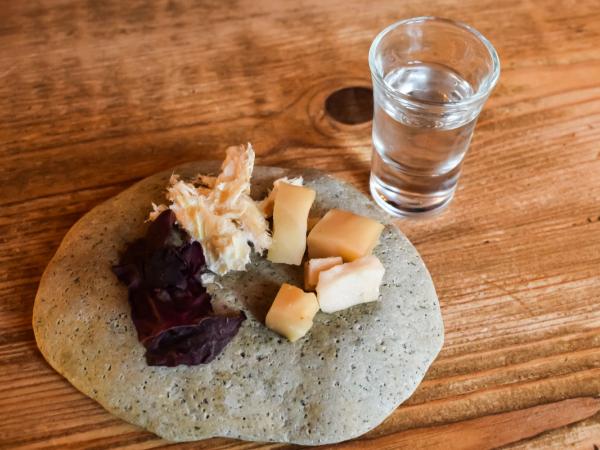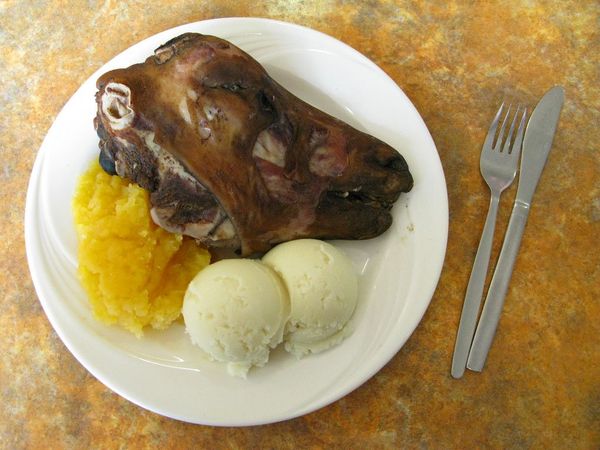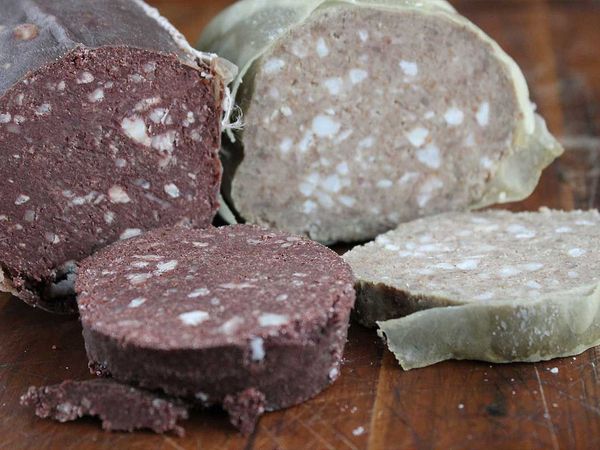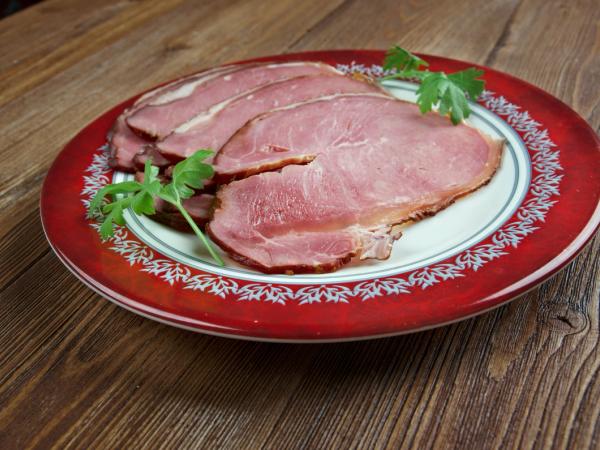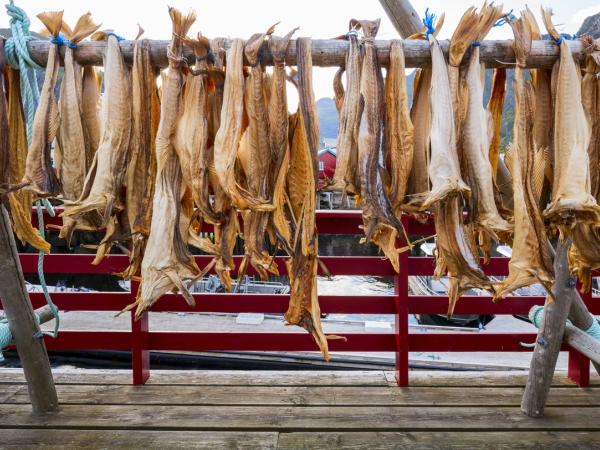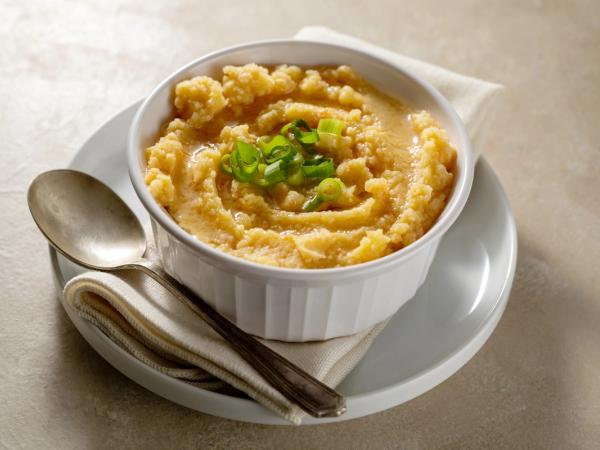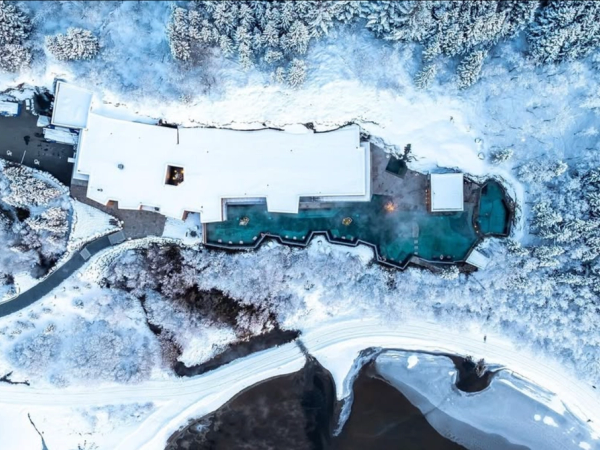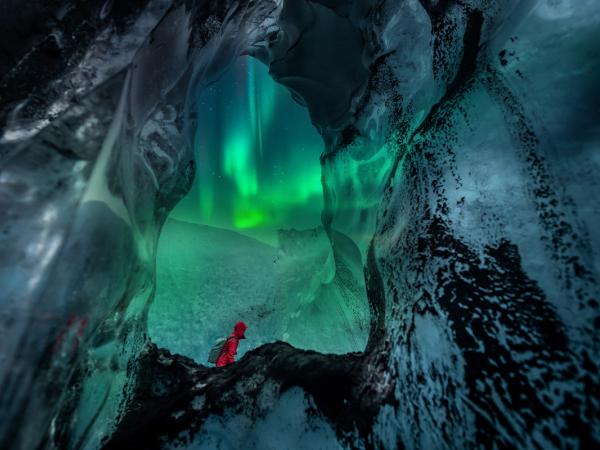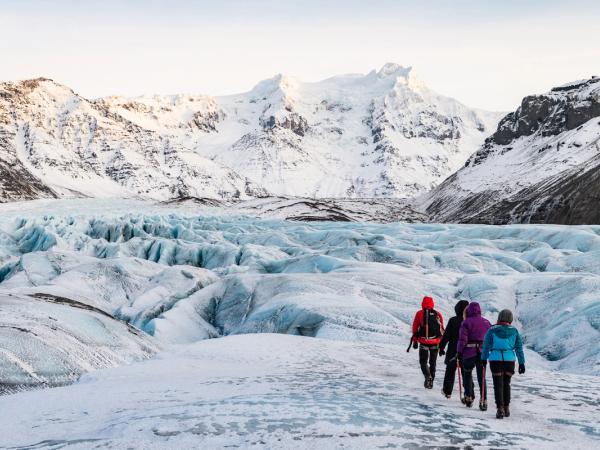
Þorrablót: Iceland's Viking Midwinter Feast That Tests Your Courage
Think about sitting in a warm hall on a cold January night in Iceland. Snow covers everything outside and it's freezing. Inside, people laugh as they drink small glasses of strong liquor and get ready to eat foods that might make you cringe. This is Þorrablót (say "Thor-ra-bloat"), Iceland's midwinter feast where food courage meets culture.
It's not just a food event. It connects to Iceland's Viking heritage and demonstrates how people have survived harsh winters for centuries. During Þorrablót, people eat preserved foods created for survival, tell stories, share poems, and laugh during the winter's darkest days.
Want to see real Iceland beyond the usual tourist spots? Þorrablót gives you a genuine experience that few visitors get, mixing food adventure, history, and community into one unforgettable night.
The Origins and Cultural Significance of Þorrablót
The name tells the story: "Þorri" is the fourth winter month in the old Norse calendar (mid-January to mid-February), and "blót" means sacrifice or feast. In Viking-age Iceland, people held midwinter rituals to help them endure the harsh season.
Icelandic sagas tell us Þorri wasn't a god but winter personified, the son of Snow. Early Icelanders made offerings to this frost giant and to gods like Thor and Freyr, hoping for protection until spring returned.
When Christianity arrived around 1000 CE, these pagan rituals faded away. They returned much later, in 1873, when Icelandic students in Copenhagen hosted a Þorrablót feast with traditional foods and patriotic speeches. This wasn't just about eating; it was a cultural statement during Iceland's push for independence from Denmark.
"The students raised glasses to the old Norse gods and to 'Iceland the free,'" says historian Halldór Laxness. "They were reclaiming their pre-Christian roots while building national identity."
By the 1950s and 1960s, Þorrablót had firmly become part of modern Icelandic culture. Reykjavík restaurants started offering special Þorramatur (Þorri foods) menus. Today, it's something uniquely Icelandic: a serious cultural heritage combined with a touch of humor about Viking ancestry.
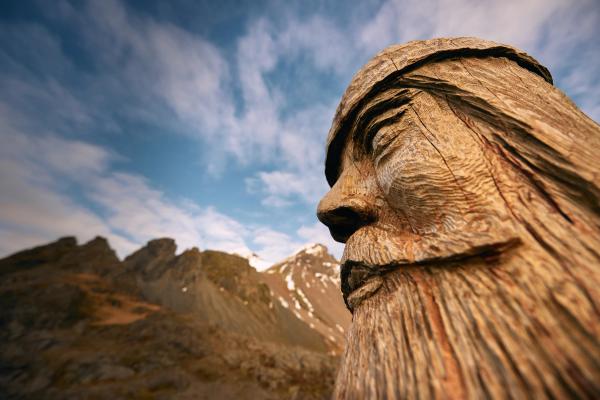
Cultural Significance Today
For modern Icelanders, Þorrablót serves many purposes:
- It connects them to their ancestors' clever survival methods
- It brings people together during the darkest, coldest days
- It creates space for poetry, music, and storytelling
- It allows for humor and celebration when it's needed most
The phrase "að þreyja þorrann" (to endure Þorri) is still common in Iceland when talking about getting through tough times. By transforming what was once a survival ritual into a fun event, we demonstrate our unique approach to facing hardship with humor; a key aspect of our character.
When to Experience Þorrablót
Þorrablót happens during Þorri in the old Norse calendar, from mid-January to mid-February. It's not just one day but a season of celebrations, with different communities hosting events on various weekends.
Þorri officially begins on a Friday between January 19 and 25 (called Bóndadagur or "Husband's Day") and lasts until mid-February. For winter 2025-2026, Þorri starts Friday, January 23, 2026.
Special Days in the Festival Period
Two main dates mark the Þorrablót season:
- Bóndadagur (Husband's Day): The first day of Þorri when festivities start. Women typically give their male partners small gifts or make special meals. Old stories say men were supposed to hop outside in their underwear to "welcome Þorri," but that's rare these days!
- Konudagur (Women's Day): Marks the end of Þorri and start of Góa (the fifth winter month), in mid to late February. Men return the favor with flowers or treats – Iceland's version of Valentine's Day.
Most Þorrablót events take place on weekends between these dates, with most happening in late January and early February.
Planning Your Trip
If you want to see Þorrablót, try to visit Iceland in late January or early February. This timing gives you several good things:
- It's the best time for Northern Lights
- Fewer tourists than summer
- Winter hotel deals
- Peak festival mood
Keep in mind that winter weather can make travel challenging, especially in rural areas. Roads might be snowy or icy, and daylight only lasts about 6-8 hours in January/February. Book everything well in advance, as popular Þorrablót events fill up quickly.

Best Places to Experience Þorrablót in Iceland
You'll find Þorrablót events across Iceland, from tourist-friendly spots in Reykjavík to gatherings in small villages. Your choice affects how real, easy to access, and English-friendly your experience will be. City events are more accessible to visitors, while rural celebrations offer the "real thing" (if you can get in).
Reykjavík: Urban Celebrations
Iceland's capital gives you the easiest access to Þorrablót. Options include:
Restaurant Þorrablót Dinners
Several restaurants serve special Þorramatur menus during Þorri month:
- Café Loki (near Hallgrímskirkja): Offers tourist-friendly Þorramatur with less scary options.
- Múlakaffi: Known for home-style Þorramatur that locals actually eat.
- Matur og Drykkur: Serves modern versions of traditional foods in a nice setting.
Most restaurant experiences cost 5,000-8,000 ISK ($35-60) per person.
Hotels and Organized Events
Several hotels host Þorrablót packages with dinner and entertainment:
- Icelandair Hotels often organize cultural evenings with traditional food and music.
- Þjóðmenningarhúsið (The Culture House) sometimes hosts educational Þorrablót events with English explanations.
These typically cost 10,000-15,000 ISK ($75-110) and need booking ahead.
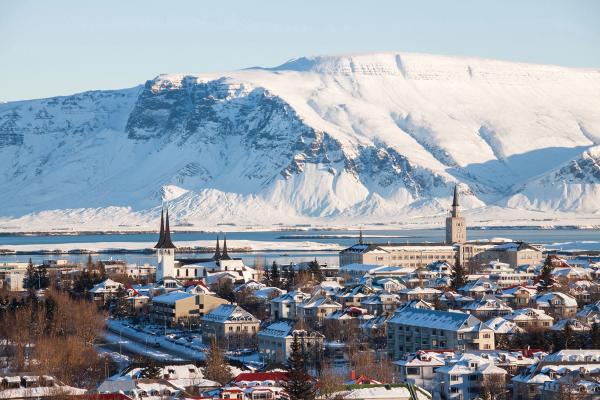
Akureyri and Northern Iceland
Iceland's "Capital of the North" has some of the oldest Þorrablót traditions, going back to 1874.
- Akureyri's Historical Þorrablót: The town's annual event takes place in community halls, featuring speeches, poetry, and dancing alongside the traditional feast. Being further north also means better chances of seeing Northern Lights.
- Surrounding Communities: Smaller towns like Húsavík and Siglufjörður host community Þorrablót gatherings that, while harder for tourists to join, offer more authentic experiences for those with local connections.
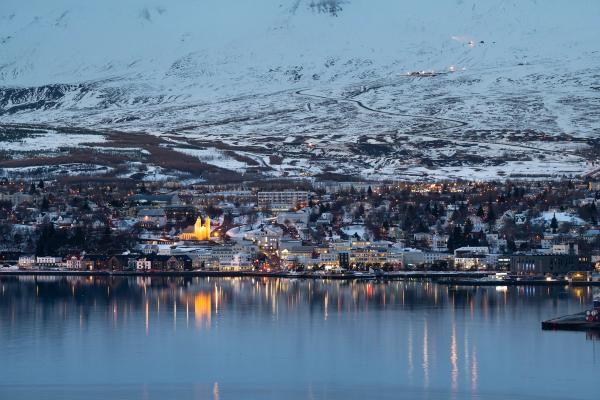
Rural and Community Celebrations
For the most authentic experience, head to smaller communities:
- South Iceland Towns like Selfoss and Hella host lively community Þorrablót events in local halls. These often have homemade foods prepared by community members rather than restaurant fare.
- East and West Fjords: The most remote regions keep some of the most traditional celebrations, though tourists can't easily access these without personal invitations or connections.
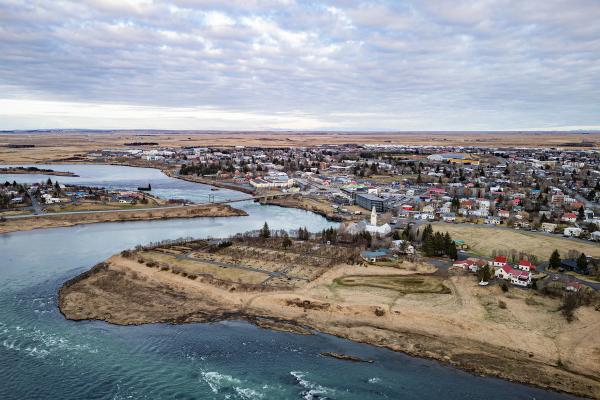
What Happens at a Þorrablót Celebration
Þorrablót follows a pattern that mixes old traditions with modern socializing. The evening goes from welcome and eating to entertainment and dancing that often runs late. You'll see cultural traditions, funny speeches, poetry, and community bonding, all helped along by traditional food and plenty of strong drinks.
Structure of a Typical Evening
A typical Þorrablót follows this pattern, with local differences:
- Arrival and Welcome (7-8 pm): People gather, dressed in nice clothes or Icelandic woolens.
- The Feast (8-9:30pm): The Þorramatur buffet is served, often in wooden troughs like old Viking serving vessels. Someone makes the first toast, sometimes jokingly mentioning Thor or other Norse gods.
- Entertainment Program (9:30-11 pm): After dinner, come speeches, poetry readings, comedy skits, and music.
- Dancing and Socializing (11pm-late): Tables are moved aside for dancing and celebration, often continuing until early morning.
The Social Atmosphere
The mood at Þorrablót is warm and lively, very different from the cold outside. It combines formal cultural elements with casual socializing.
Humor plays a big role, with speeches making fun of current events, politicians, or community members. Brennivín (Icelandic schnapps) helps fuel the fun and gives the courage to try challenging foods.
Entertainment and Performances
Entertainment varies by location but typically includes:
- Speeches: Often funny takes on local happenings or current events
- Poetry: Readings of traditional Icelandic verses or epic poems
- Music: Folk songs, with group singing where everyone joins in
- Comedy skits: Light-hearted performances making fun of Icelandic life
- Dancing: Traditional and modern dancing as the night goes on
In more traditional settings, you might hear toasts to Þorri or other Norse figures, though these are cultural nods rather than religious practices nowadays.
Dress Code and Etiquette
Most Icelanders dress well for Þorrablót (at least smart casual), with many in formal clothes. Some people wear traditional items, such as the Icelandic wool sweater. As a visitor, clean, warm clothing works fine.
Etiquette tips:
- Try at least a small bite of the traditional foods (it's polite)
- Join in toasts with a hearty "Skál!" (cheers)
- Sing along if song sheets are provided, even if you don't know the language
- Show interest in the cultural experience
- Ask questions politely – Icelanders are usually happy to explain traditions

Þorramatur: The Traditional Food Challenge
The foods at Þorrablót tell a tale of survival. Before refrigeration, preserving food through winter was about staying alive in Iceland. Methods like fermentation, smoking, pickling, and drying kept proteins edible through the dark months.
"These weren't fancy foods by choice but necessities," says food historian Nanna Rögnvaldardóttir. "What modern eaters find strange was just normal winter dinner back then."
Today's Þorramatur shows this preservation cleverness, with each dish highlighting a different method for keeping food longer.
Must-Try Dishes for Adventurous Eaters
For those with bold taste buds, these traditional items offer the full cultural experience:
Hákarl (Fermented Shark)
The most infamous Þorrablót food is the Greenland shark, which is buried in gravel for 6-12 weeks and then hung to dry for several months. This process removes toxins from the meat. The result has a strong ammonia smell and a unique taste that challenges even experienced eaters. Usually followed with a shot of brennivín.
Svið (Singed Sheep's Head)
A sheep's head singed to remove wool, then boiled and served, split in half. The cheek meat tastes best, though brave diners eat the eyes and tongue. Often served with rutabaga or potato.
Súrsaðir Hrútspungar (Sour Ram's Testicles)
Ram's testicles pressed into blocks, boiled, and cured in whey. Usually sliced and served cold. The flavor is tangy from fermentation.
Blóðmör (Blood Pudding) and Lifrarpylsa (Liver Sausage)
Blood pudding made from sheep's blood mixed with flour and suet, and liver sausage made from ground liver and fat. These are milder compared to other options.
Milder Options for Cautious Travelers
If the above choices sound too challenging, these more approachable foods are also part of the traditional spread:
- Hangikjöt (Smoked Lamb): Smoked lamb that's thinly sliced and served cold. The smoky flavor is pleasant and familiar to most people.
- Harðfiskur (Dried Fish): Wind-dried fish (usually cod or haddock) beaten until tender. Often eaten with butter. Tastes like chewy fish jerky.
- Rúgbrauð (Rye Bread): Dense, slightly sweet dark rye bread traditionally baked slowly using geothermal heat. Good with butter and goes well with the other foods.
- Rófustappa (Mashed Rutabaga): A side dish of mashed rutabaga that helps balance the strong flavors of the preserved proteins.
Brennivín: Iceland's Signature Spirit
No Þorrablót is complete without brennivín, a clear, caraway-flavored schnapps nicknamed "Black Death" (though the liquid is clear). At 37.5% alcohol, it's traditionally used to wash down the more challenging foods and for toasting throughout the evening.
Served in small shot glasses and sipped or tossed back depending on the occasion, brennivín is so connected to Þorramatur that you can't really have one without the other in Icelandic culture.

How to Join a Þorrablót as a Traveler
Going to Þorrablót takes some planning and knowing your options. Events range from tourist-friendly restaurant tastings to real community gatherings. Your experience mostly depends on your approach: from pre-arranged tours to local connections that might get you invited to more private celebrations.
Finding and Booking Experiences
As Þorrablót gets more popular with tourists, more options have opened up for visitors:
Pre-Arranged Tour Packages
Several tour companies now include Þorrablót experiences in winter packages:
- Guide to Iceland offers "Þorrablót & Northern Lights" combination tours
- Icelandair Holidays sometimes includes cultural evenings in winter packages
- Reykjavík Excursions has organized Þorrablót events made for visitors
Book these at least 3-4 months ahead as they fill up fast.
Restaurant Bookings
During the Þorri month, many restaurants offer special menus that you can book directly:
- Make reservations 4-6 weeks in advance
- Say if you want the full traditional experience or a modified tasting
- Ask if there will be any cultural presentations or food explanations
Local Connections
For more authentic experiences, connections with locals help a lot:
- Icelandic homestays sometimes include guests in family Þorrablót celebrations
- Local guides may have access to community events not usually open to tourists
- University or cultural exchange programs often organize student Þorrablót events
Most organized events include food, at least one drink, and entertainment. Additional alcohol is available for purchase.
Language and Cultural Considerations
While many tourist-oriented events offer English explanations, more authentic celebrations are conducted mainly in Icelandic. A few tips:
- At restaurants, staff can usually explain the food in English
- Organized tour events typically include English commentary
- Community events rarely have translations, but friendly Icelanders often help explain
- Learn a few basic Icelandic phrases like "Takk" (thanks) and "Skál" (cheers)
Tips for a Respectful Participation
To make the most of your Þorrablót experience while respecting local culture:
- Show interest: Ask questions about the traditions and meanings
- Try the food: Sample at least a bit of each dish, even the challenging ones
- Join in toasts: Raise your glass for "Skál!" when others do
- Participate: If there's singing or dancing, join in rather than just watching
- Show appreciation: Thank hosts and acknowledge the cultural significance
- Avoid criticism: Don't make faces or negative comments about the food, even as a joke
- Dress properly: Smart casual or business casual clothes show respect
Visiting Iceland in winter requires preparation:
- Dress in layers: Thermal base layers, insulating mid-layers, and waterproof outer layers
- Footwear: Sturdy, waterproof boots with good grip are essential
- Driving: Rent a 4WD vehicle and check road conditions daily at road.is
- Daylight hours: Plan activities knowing daylight is limited (roughly 10 am-4 pm in late January)
- Weather changes: Be ready for conditions to change quickly
- Emergency number: 112 works throughout Iceland

Insider Tips and Local Knowledge
Beyond basic facts lie the details that turn a tourist experience into something real. From how locals really feel about hákarl to quirky customs not in travel guides, these insider tips help you appreciate Þorrablót's cultural context and avoid common mistakes.
How Icelanders Really Feel About These Traditions
Modern Icelanders have a mixed relationship with Þorrablót traditions:
- Most go to at least one Þorrablót event yearly
- Many enjoy the social parts more than the traditional foods
- Younger people often approach it with ironic humor
- Rural communities typically maintain more serious traditions
- Nearly all see it as important cultural heritage worth keeping
Funny Customs and Quirky Traditions
Beyond the main festivities, look for these lesser-known aspects:
- Þorraþræll (Slave of Þorri): The last day of Þorri, when some communities host especially lively celebrations to "send off" the month
- Þorrablótsnefnd: The organizing committee for community events, often enthusiastic volunteers who plan elaborate entertainment programs
- "Bóndadagur surprise": Some women still wake their partners with a small Þorri-themed gift placed on their chest while sleeping
- Improvised food poetry: At some gatherings, guests make up short, funny verses about the food or other guests
Common Mistakes to Avoid
First-time visitors often make these errors:
- Refusing to try anything: Even a tiny taste shows respect for the tradition
- Over-drinking brennivín: The strong spirit sneaks up on you; pace yourself
- Missing context: Take time to learn about why these foods exist
- Focusing only on the "gross factor": This misses the cultural significance
- Scheduling too tightly: Winter weather can delay travel; build in extra days
Souvenirs Related to the Festival
Take home a memory of your Þorrablót experience:
- Bottles of brennivín (available at duty-free)
- Packaged harðfiskur (dried fish) that travels well
- Handmade wooden serving trays similar to traditional ones
- Books on Icelandic food culture and history
- Recipe collections for modern versions of traditional foods
Beyond the Festival: Combining Þorrablót with Other Winter Experiences
Winter in Iceland offers unique experiences that go well with Þorrablót. The festival timing matches peak Northern Lights season and winter-only activities like ice cave tours. Planning a full winter trip lets you experience both cultural traditions and natural wonders during Iceland's most dramatic season.
Winter Activities
The Þorri season offers several winter-only activities:
- Northern Lights are not only visible during winter, but it’s definitely the best time to see them
- Relaxing at a hot spring while it’s cold outside is an experience that’s hard to beat
- Ice cave tours in Vatnajökull glacier (only accessible in winter)
- Glacier hiking with crampons and guides
- Snowmobiling on glaciers or mountain tracks
- Dog sledding adventures in North Iceland
- Ski touring at resorts like Bláfjöll (near Reykjavík) or Hlíðarfjall (near Akureyri)
- The Winter Lights Festival takes place in Reykjavik in early February
Practical Winter Travel Tips
Practical Final Tips
As you plan your Þorrablót adventure:
- Book places to stay and experiences well ahead of time
- Be flexible with your plans due to winter weather
- Come with an open mind and sense of humor
- Connect with locals whenever possible for insider knowledge
- Mix cultural activities with natural wonders
Embracing the Spirit of Þorri
At its core, Þorrablót showcases what makes Icelandic culture special: its toughness, community, and humor in the face of challenges. By transforming survival foods into celebrations, Icelanders demonstrate how to embrace a difficult history with joy and pride.
For you, joining Þorrablót will offer something rare in tourism: a genuine cultural experience that hasn't been changed for visitors. The foods might challenge you, the songs might be in an unfamiliar language, but the warmth of community and connection to ancient traditions crosses these barriers.

